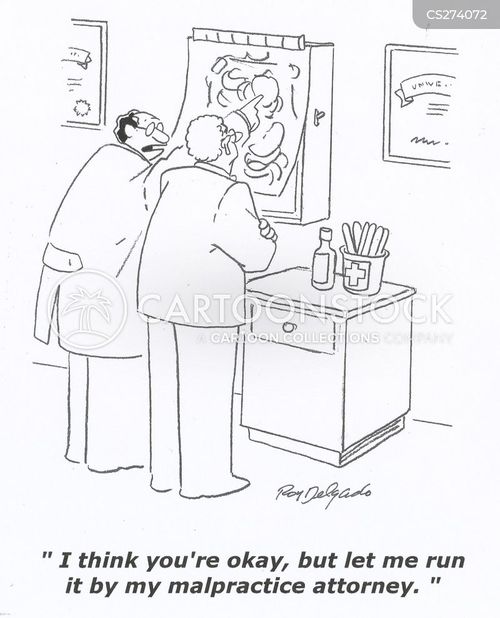Medical malpractice lawyers also perform additional tasks such as:
- Working with medical experts to develop case theories, expert reports, and testimony to support the plaintiff's case
- Taking depositions of medical experts, medical personnel, and other third parties
- Gathering and analyzing medical records
How to become a medical malpractice lawyer?
When you’re injured, a medical malpractice attorney can make sure you are taken care of and fairly compensated if you were indeed the victim of medical malpractice. By doing the legwork of dealing with insurance companies, medical malpractice attorneys ensure their clients will have the peace of mind and rest needed to recover. With decades of combined experience, Alvarez …
How do you find a medical malpractice attorney?
Jan 30, 2022 · A legal malpractice attorney is a lawyer who specializes in representing either defendants or plaintiffs in legal malpractice lawsuits. A surgeon who is negligent during surgery may face charges. The first job of a legal malpractice attorney is to determine whether a proposed lawsuit is a viable claim.
What is the salary of a medical malpractice lawyer?
A medical malpractice attorney is a lawyer focused on helping patients who have been injured by a doctor or hospital while under their care. Unfortunately, medical malpractice happens far more often than it should.
How much does a health lawyer make?
Jan 14, 2021 · A medical malpractice attorney represents patients or surviving family members of clients who are seeking legal action against medical practitioners who failed to provide the proper medical attention.

What is the first action of a malpractice lawsuit?
The first step to starting a medical malpractice case is contacting the doctor or medical professional who works with you before you actually file the claim. Your goal is to get an understanding of what may have gone wrong and allow your doctor to determine whether it's something that can be remedied.Jul 2, 2019
How do you prove medical malpractice?
To prove that medical malpractice occurred, you must be able to show all of these things:A Doctor-Patient Relationship Existed. ... The Doctor Was Negligent. ... The Doctor's Negligence Caused the Injury. ... The Injury Led to Specific Damages. ... Failure to Diagnose. ... Improper Treatment. ... Failure to Warn a Patient of Known Risks.More items...
When can you sue for medical malpractice?
Specific time limits apply to medical malpractice claims. Generally, you must claim damages for medical negligence within three years from the time when you became aware of the facts necessary to institute a claim. Various exceptions apply to this general rule.
What are some issues related to malpractice?
To pursue a medical malpractice claim, the patient must show that the injury resulted in disability, loss of income, unusual pain, suffering and hardship, or significant past and future medical bills.
What are the 4 elements of malpractice?
What Are the Four Elements of Medical Malpractice?Duty: The duty of care owed to patients.Dereliction: Or breach of this duty of care.Direct cause: Establishing that the breach caused injury to a patient.Damages: The economic and noneconomic losses suffered by the patient as a result of their injury or illness.
Whats the difference between malpractice and negligence?
The Key Difference Between Malpractice and Negligence In simple terms, medical negligence is a mistake that resulted in causing a patient unintended harm. Medical malpractice, on the other hand, is when a medical professional knowingly didn't follow through with the proper standard of care.
How long does a medical negligence case take?
A medical negligence claim can take upwards of 18 months to settle, dependant on the complexity of the case. In fact, even in cases where there are similarities, complications and objections can and do arise.
What can you claim for in medical negligence?
There are many types of medical negligence that may warrant a claim, including;Misdiagnosis or delayed diagnosis.Negligent cosmetic procedures.Mistakes during dental work.Care home negligence.Pressure sore claims.Incorrect surgery.Birth injuries.
What is classed as medical negligence?
Medical negligence is substandard care that's been provided by a medical professional to a patient, which has directly caused injury or caused an existing condition to get worse. There's a number of ways that medical negligence can happen such as misdiagnosis, incorrect treatment or surgical mistakes.
What are the five most common types of medical malpractice?
What are the 5 Most Common Types of Medical Malpractice Lawsuits?Misdiagnosis. Failure to diagnose an illness is a common medical mistake. ... Surgical errors. ... Failure to treat. ... Birth injuries. ... Prescription drug errors.
What was the most common injury sustained in a malpractice case?
These are the most common medical malpractice claims in the state of California: Birth injury claims that involve injuries sustained by a mother or baby. Surgical malpractice claims, which typically involve surgical errors and injuries sustained during surgery.
What is the most common type of malpractice?
In no particular order, the following are types of the most common medical malpractice claims:Misdiagnosis or delayed diagnosis.Failure to treat.Prescription drug errors.Surgical or procedural errors.Childbirth injuries.
Popular Posts:
- 1. how to write a good review for an attorney
- 2. what does attorney docket mean
- 3. what happened to attorney daniel e olsen
- 4. cindy tobin memphis how long has she been an attorney in wills and estates
- 5. traffic attorney who speaks russian
- 6. what goes to attorney review in real estate
- 7. where do i send my letters of good standing for the attorney exam for california
- 8. what law school should i go to become a dwi attorney
- 9. what an eldercare attorney should do before your mom goes into assisted living
- 10. out-of-state resident who forced my grandma to sign a durable power of attorney